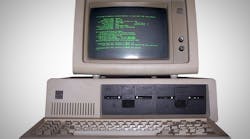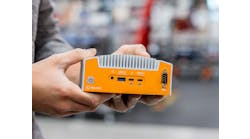IBM model number 5150 (the PC) was introduced on August 12, 1981. It would change our world as we knew it, although it would take some time to do so.
I had played around with microprocessors—Motorola 6800 and Intel MCS 8051, which the Allen-Bradley 1771-DB module was based on—in school, as well as with my good friend, Carl. He was a hardware wizard, and he was always fiddling with something.
He grew up fixing TVs of all sorts and knew his way around a tube amplifier like you and I walking around the block. You could imagine his excitement when the PC was introduced since he had migrated into software a wee bit.
The PC created a platform for creativity, and it was open, unlike Apple, which was very closed by design. I remember reading about arguments between Steve Jobs and Steve Wozniak about allowing openness, and Jobs won.
Kudos to IBM for publishing the PC for the world to enjoy.
Enter Dell Computer, Compaq, Gateway, and component-based companies, which broadened the PC format base in all spaces including the industrial space.
Carl, who was working for a power-tool manufacturer, decided to learn Lattice C and apply it to controls work and data grabbing from production lines using an Intel microprocessor 286-based personal computer. They worked well, and, as the technology improved, so did a vast array of applications that the PC could support.
Word processing and spreadsheets were the mainstay applications in business, but in the industrial world there were few applications that were being executed since most believed that a commercial product just couldn’t stand up in the industrial environment.
In the beginning I would submit that an industrial computer was nothing more than commercially available components that were placed in a chassis with an oversized fan and a power supply that had some extra filtering in it. The motherboards and memory chips were standard fare. Based on failures it became clear that some additional work needed to be done in industrial computer design.
IBM was, in the beginning, a leader in industrial designs. Believe it or not, I still have a technical manual for the IBM 7531/32 industrial computer. Inside this manual is a comparison between the normal PC and the industrialized version—minuscule differences, but enough to tank your assembler program if you used the wrong operation codes (opcodes).
It was based on the Intel 286 microprocessor and had the ability to accept expansion cards such as extended/expanded memory modules.
PC industrial-based products were available in various formats. Virtual machine environment (VME) bus systems, as well as PC-104 embedded solutions, could be applied in many different applications but weren’t “open,” as such. A very specific skill set was needed to utilize these hardware platforms.
The IBM 7531/32 industrial computer changed the way we thought about using commercialized hardware on the factory floor. Windows 2.1 was available, as was QuickBasic, which allowed the control engineer to write and implement solutions for his/her own use. It was a sort of renaissance for the industrial user.
PLC programming software had been available for some time and was based on DOS. Industrial laptops were just becoming visible. And they weren’t cheap. But now the plant-floor electrician had a tool that could be used on the floor and didn’t weigh 35 lb, which earlier programming units did.
And we have never looked back. There is a big argument that has raged on forever about why you need to use industrial gear for industrial use. According to Thomas Register there are 656 suppliers of industrial computer hardware, so there must be something to this argument.
Part of the difference is found in the electronics used in the systems—0 to 60 ºC is a standard for industrial systems in the early days. This specification applied to all components.
This specification can vary based on the components used. Most industrial subassemblies would use military-specification components, and, with the level of integration in modern-day appliances, the temperature specifications are important to be aware of.
Shock and vibration specifications for industrial computers along with power filtering and cooling set these computers apart from the normal desktop variety.
The advent of fanless designs accentuates the maintainability of these computers. If a fan fails, then the internal temperature would increase, causing failure of one or more of the components. In a commercially available computer, there are multiple fans to keep things cool.
A fanless design rocks.
You will pay more for an industrial design and build. And there are good reasons for that. For any application that will be living in the industrial world it would behoove the designer to err on the side of longevity and choose from the array of solutions that will benefit the implementation for a long time to come.
The IBM 7531 still lives, by the way. It is considered vintage though.






